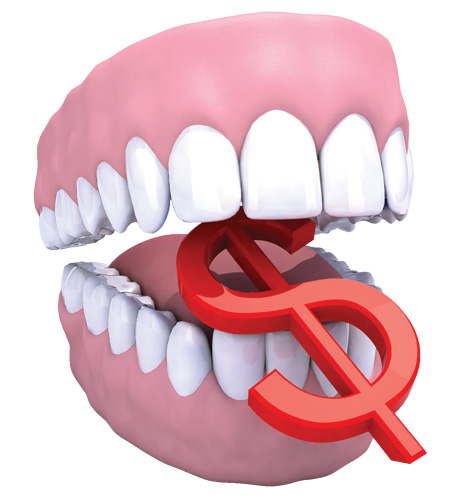 Historically low interest rates and the return of the overall economy spur new activity from dentists.
Historically low interest rates and the return of the overall economy spur new activity from dentists.
BY JON BELL
 When Stephen Persichetti tells his students at the Oregon Health & Science University School of Dentistry how much student loan debt he had at the end of dental school in 1984, the room fills with groans.
When Stephen Persichetti tells his students at the Oregon Health & Science University School of Dentistry how much student loan debt he had at the end of dental school in 1984, the room fills with groans.
Persichetti, a dentist and an associate professor in OHSU’s Department of Community Dentistry, owed around $18,000. Dental students today can find themselves on the hook for up to $180,000 — or more.
“At graduation,” Persichetti says, “they’re going to be in a situation where the only way they’re ever going to be able to service that debt is to be the owner of a practice.”
New graduates and dentists have something on their side that their counterparts in the early 1980s didn’t: historically low interest rates. Those, along with the gradual return of the overall economy, have spurred some new activity from dentists set on hanging out their own shingles.
“In the last eight to 10 months, we’ve seen a real increase in the number of people asking what their possibilities are,” says Scott Beard, director of health care banking for Pacific Continental Bank. “Dental has always been a pretty active market, but it’s been picking up even more lately.”
According to the Oregon Board of Dentistry, there are just over 2,800 licensed dentists in Oregon, up from almost 2,600 in 2008. Patrick Braatz, executive director of the board, says numbers have been flat recently, and he’s heard that it’s been difficult for new graduates to find full-time employment. The recession also found a few dentists filing for bankruptcy or selling their practices.
But with interest rates below 4% and medical leases hovering above $25 per square foot, Beard says it’s essentially cheaper for a dentist to build new than it is to lease. A dentist could expect to spend between $400,000 and $600,000 to build a startup practice. That more dentists may be setting up their own shops comes as no surprise to Persichetti, who says that about 95% of OHSU dental graduates — 74 graduated in 2012 — have some type of equity interest in a practice within five years of graduation.
“One reason you see these loans is that lenders love dentists,” he says. “We stay in the same location for 30 years, or we assume practices from retiring dentists. Lenders love to see that kind of cash flow.”


